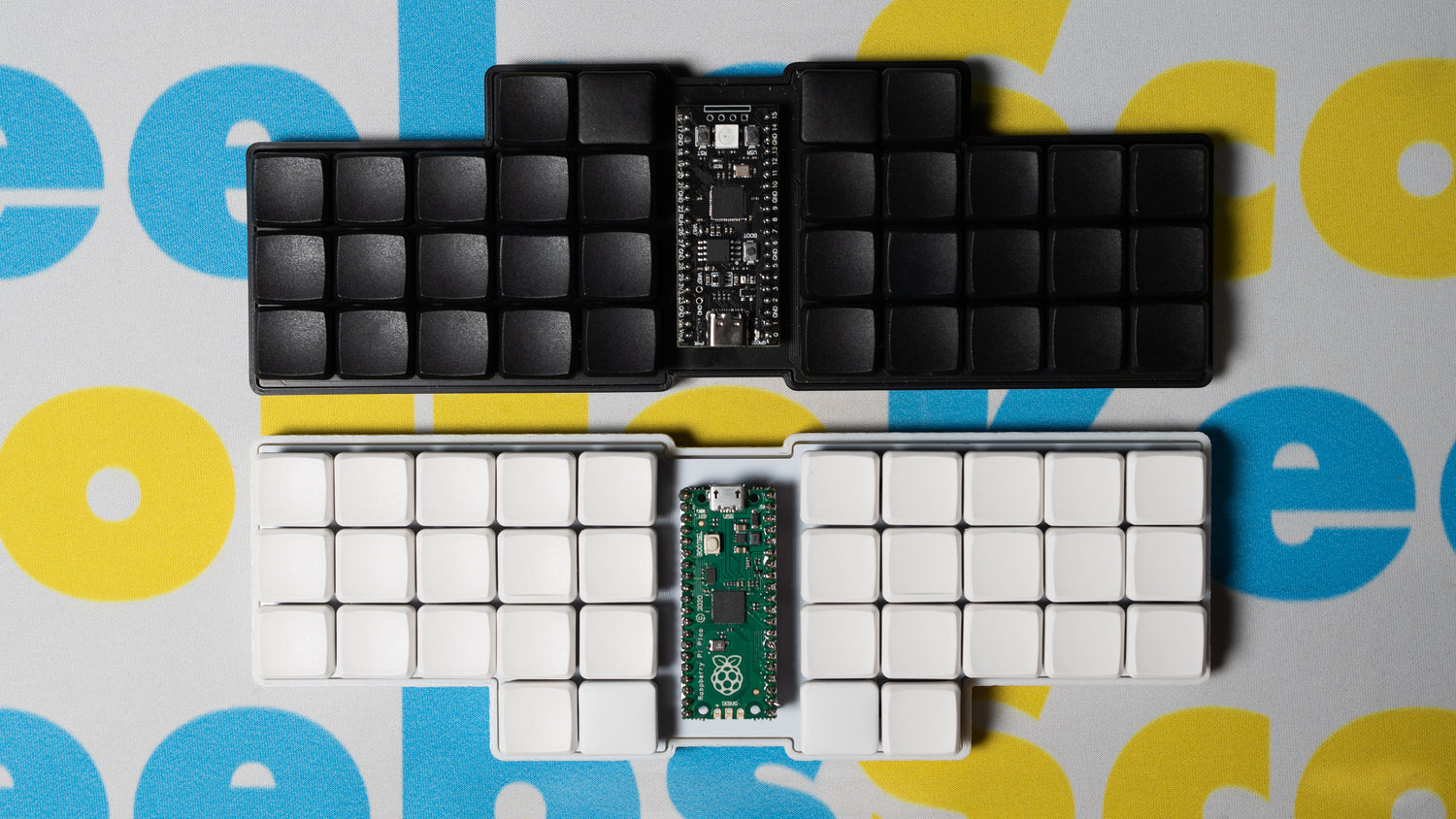Getting One
If you’re interested in getting one assembled, contact me and we can discuss the components and other details for a commissioned build. However, the files are available here if you want to build one yourself.
In addition to the 3D printed case, heat shink tubing, wire, and copper, you'll also need tools along with the following components:
- 2 Raspberry Pi Pico
- 4 USB-C breakout boards
- 1 USB-C to USB-C cable
- 1 Sheet of 1mm plexiglass
- 44 1N4148 diodes
- 40 M2x5mm screws
- 8 M2x4mm screws
- 16 M2x8mm standoffs
- 8 M2x4mm standoffs
- 44 MX switches
- 2 3u plate mount stabilizer
- 42 1u keycaps
- 2 3u keycaps
Wiring

When looking at the back of the board, the columns (blue) go to the following pins on the controller from right to left for each half: GP16, GP17, GP18, GP19, GP20, GP21, GP1
Then the rows (red) go from top to bottom: GP28, GP27, GP26, GP22
The USB-C breakout should connect to: VCC, GND, and GP0
Keep in mind, you can connect anywhere on the column or row to the controller, it doesn't need to just be at the end.
Firmware
You can find the most up-to-date firmware on the ScottoKeebs Github repository. Also available are the pre-compiled firmware files that are ready to flash:
- default.uf2 - Default QMK keymap in QWERTY.
- scotto.uf2 - My personal QMK keymap in Colemak.
- vial.uf2 - Default QMK keymap in QWERTY with Vial configurator support.
Since this board is split, you should flash each left and right file to the respective side first. Afterwards you can use any non left or right file to flash a new keymap. This is because the board needs to know which half is which and flashing the respective keymap to each side stores it in memory on the controller.
After flashing vial.uf2, you should load the vial.vil configuration file within the Vial application to ensure everything functions as expected.
Video
Photos





3 comments
Hi – this is only the second split keyboard I’ve built, and the first (using POG/KMK) didn’t work.. so I’m new to all this.
I’ve loaded the vial_left & vial_right uf2 files onto each Pi Pico, and opened them in the webvial. The keymap on the right half has H on the action button and the it loks like the column that should ne y h n is missing or its all shifted left, when compared with the keymaps file in the QMK folder. I’v enot tried to change it myself in vial yet (that’s new too).
Hi,
will I be able to use a Nordic NRF52840 in the place of the Pico?
Thanks!
This rocked so hard Jimmy Hendrix smashed his guitar